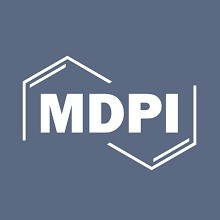
مقاله انگلیسی تاثیر کووید-19 بر پذیرش اینترنت اشیا در بهداشت و درمان، خانه های هوشمند، ساختمان های هوشمند، شهرهای هوشمند، حمل و نقل و اینترنت اشیای صنعتی
Abstract
Open Access and Permissions
Share and Cite
Article Metrics
Order Article Reprints
Abstract:
COVID-19 has disrupted normal life and has enforced a substantial change in the policies, priorities and activities of individuals, organisations and governments. These changes are proving to be a catalyst for technology and innovation. In this paper, we discuss the pandemic’s potential impact on the adoption of the Internet of Things (IoT) in various broad sectors, namely healthcare, smart homes, smart buildings, smart cities, transportation and industrial IoT. Our perspective and forecast of this impact on IoT adoption is based on a thorough research literature review, a careful examination of reports from leading consulting firms and interactions with several industry experts. For each of these sectors, we also provide the details of notable IoT initiatives taken in the wake of COVID-19. We also highlight the challenges that need to be addressed and important research directions that will facilitate accelerated IoT adoption.
1. Introduction
The Internet of Things (IoT) is envisioned as a network of billions of devices that can sense, communicate and share data which can then be analyzed to unlock a wealth of intelligence useful for planning, management and decision making [1]. IoT promises huge benefits for a variety of domains such as healthcare, manufacturing, agriculture, telecommunication and transportation. Despite the popularity of the IoT concept and its promised benefits, its adoption has been significantly slower than expected [2,3]. Some of the major reasons behind this include: (1) security, privacy, policy and trust issues [3–5]; (2) organisational inertia, long capital cycles and shortage of specialist workforce needed to successfully implement IoT [2,5]; and (3) lack of convincing use cases with clear return on investment (ROI) in some sectors.
COVID-19 has impacted all walks of life so much that we may never return to the old normal. This pandemic is proving to be a catalyst for digital transformation because COVID19 has created or expanded applications and use cases of digital technologies [6–8]. It has also forced governments, organisations and individuals to change/adapt their priorities, their views on societal/ethical issues, and the way they operate. In many cases, this has addressed or mitigated many of the above mentioned reasons behind the slower-thanexpected adoption of IoT across many verticals. For example, governments have invested huge amounts of resources in IoT and other technologies to combat COVID-19. Lifestyle changes brought about by COVID-19 such as work/study from home have also provided new use cases of IoT with clear ROI such as remote asset control, workforce tracking and remote employee collaboration [9]. Consequently, many organisations have increased investment in IoT and the pace of their IoT projects [10,11]. The fight against COVID-19 has resulted in a less strict stance on privacy issues, higher trust in technology and fasttracked approval procedures. This is also paving the way for accelerated adoption of IoT in various verticals. Furthermore, regulatory changes such as stricter cleaning and tracking requirements for businesses are also accelerating the IoT adoption in smart buildings.
